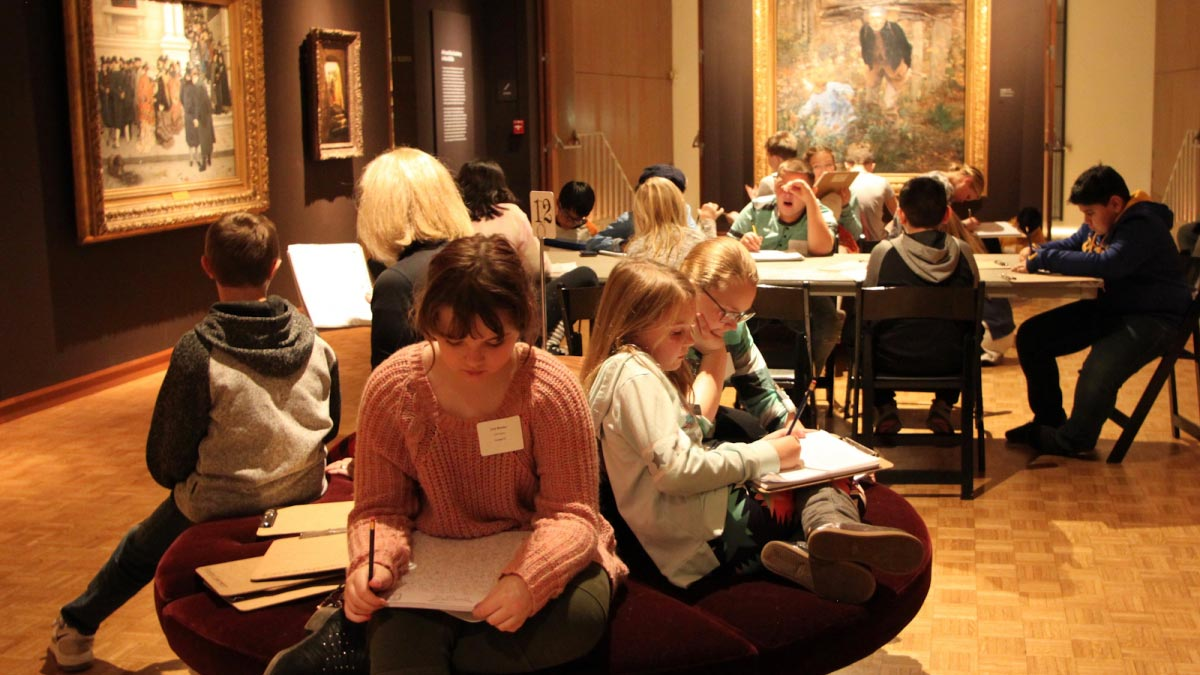A New Playing Field for Museum Funding
When baseball was deemed “unwatchable” by Hall of Famers and fans alike, MLB knew something needed to change. One of the most “game changing” new rules was the introduction of the pitch clock which has significantly reduced “dead time” in games. For years, museum professionals have acknowledged that the current museum funding model is not working. In fact, 33% of them have identified potential reduction or elimination of government funding as a significant disruption to their business strategies looking ahead to 2025. Unfortunately, no one has successfully created and implemented a “pitch clock” funding model yet. That does not mean that the rules are not still changing though, the loss of federal funding for museums has only increased the need for an innovative funding solution.
Museums across the country are responding to reduced federal support with varied strategies. While federal funding has never been a reliable funding source, recent cuts set the stage for a whole new ballgame. Orianna Cacchione, the Deputy Director and Curator of University at the Richmond Museums, highlights the challenges due to the sudden nature of funding cuts. She notes that the lack of clarity surrounding these changes is causing growing panic and anxiety. Despite these challenges, many institutions are demonstrating resilience by implementing measures to stabilize their financial footing. David Cole, the president and CEO of the Science History Institute, says, “The game is not over yet, [but] the game has to change.”
Troubleshooting
Museums facing federal funding cuts are developing forward-thinking strategies to ensure their sustainability. As Cole suggests, it is important for museums to avoid relying heavily on federal funding for their operating budgets, given the current political climate. Instead, focusing on individual philanthropy and donor engagement offers a more stable alternative. Patricia O’Toole, the Chief Financial & Operating Officer at the Toledo Museum of Art shared that they rely heavily on their endowment and their donors to maintain independent funding sources. To diversify income streams, museums are embracing innovative funding models, such as membership programs, corporate sponsorships, and targeted fundraising campaigns. Additionally, adopting digital platforms for virtual events and online donations can broaden their reach and increase financial support. By leveraging technology and engaging with a wider audience, museums can build a more resilient financial foundation that is less dependent on fluctuating federal funds.
Museums are increasingly turning to alternative funding sources to ensure financial stability. At the Spencer Art Museum at the University of Kansas, successful efforts have been made to endow two new positions and an intern. They are also discussing ways to amplify their development team as they face an evolving funding situation. This approach offers more stable funding compared to relying solely on federal or state sources. Exploring community-driven initiatives, such as crowdfunding campaigns and local partnerships, has proven effective in securing funds. Additionally, many museums are engaging in private-public partnerships to gain access to new funding streams. Foundations, philanthropic organizations, and corporate sponsorships are becoming increasingly important as museums seek diversified income sources. By proactively seeking these opportunities, museums can build a more resilient financial foundation that supports their mission and enhances their impact on the community.
Teamwork Makes the Dream Work
Partnerships play a crucial role in securing financial stability for museums in these uncertain times. Nonprofit organizations, including museums, can and should advocate, including lobbying efforts, to communicate with Members of Congress about the impacts of executive orders and potential grant terminations on their operations and the communities they serve. “Congressmen recognize that museums in their district receive this money.” says Cole who has already been having conversations with members of congress.
Case studies of successful museum collaborations demonstrate the potential of partnerships to overcome funding challenges. Jennifer Talbott, the Deputy Director for Operations and Innovation at the Spencer Museum of Art, mentioned Dutch museums as a source of inspiration for resource sharing. “Basically, it's a storage repository warehouse for many institutions, where they've built it together, they paid for it together [and] they have a shared staff on-site for object retrieval and it serves as a model of how you can share resources.” says Talbott. By engaging in collaborations, museums can share resources, knowledge, and audiences, thereby enhancing their financial resilience.
Don’t Hate the Player, Hate the Game
With changes in federal funding regulations on the horizon, museums must be prepared to navigate these new rules effectively. It is anticipated that new conditions and limitations will likely be placed on federal funds received through assistance, grants, or contracts. Some professionals are viewing these changes as opportunities for innovation in their funding approaches and creative adaptability to language that aligns with emerging requirements. Talbott says, “Our mantra right now is ‘a show don't tell,’ In terms of what we do in the museum and how we're doing this, it will not affect our mission critical objectives we want to fulfill.”
With the cancellation of two exhibitions at the National Gallery already, museum professionals’ concerns of a changing cultural landscape, in addition to funding, are growing. Cacchione shares, “The biggest fear for me in this moment is around self-censorship. During periods of uncertainty, I think that there's a chance that institutions become overly cautious and perhaps change their programs and that's what's really chilling to me… So I hope that institutions continue to be brave in the work they do.” Despite these fears, she also expresses her faith in museums, “And so far that’s what I have been seeing, museums coming together to champion the work of artists.”
Learning from the Challenge
Amid the financial challenges posed by funding changes, museums have the opportunity to learn and evolve. This period of adaptation can serve as a catalyst for long-term transformation, prompting museums to build more resilient financial models for the future. Museums should consider diversifying revenue streams, such as expanding private donor bases, exploring earned income opportunities, and seeking support from foundations. Many organizations, such as Art Share, are working to rethink funding strategies and build collaborative frameworks that allow museums to pool resources and develop innovative approaches to financial sustainability. For individuals, supporting museums directly through memberships, donations, and participation in programs can provide immediate relief and stability. Additionally, reaching out to policymakers to advocate for continued federal arts funding is a crucial step. Institutions can also play a vital role by joining advocacy networks and regional partnerships to amplify their voices. These efforts rely on the engagement of both the public and museum professionals to strengthen the field as a whole.



